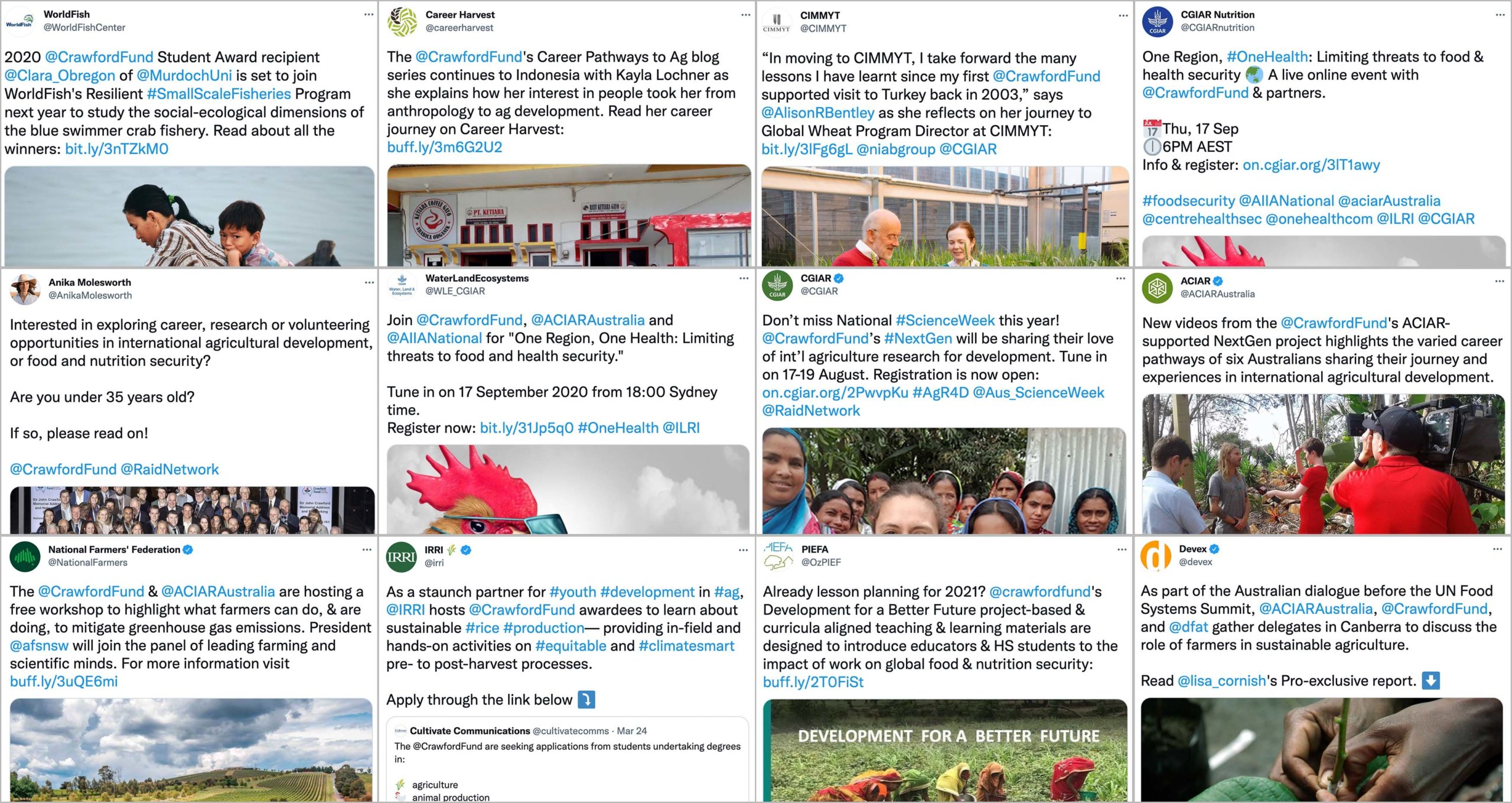

Competing with COVID
September 1, 2021
Achieving media coverage on other global issues in a pandemic when the whole world is focused on lockdowns, vaccinations and transmission chains has been an ongoing challenge for the Crawford Fund during the 2020-2021 financial year.
Nevertheless, achieving positive and pertinent traditional media coverage, and an increasing social media presence drawing attention to the benefits to Australia and developing countries from international agricultural research has been effective.
The work of Australian researchers, volunteers and students, and our global partners in agricultural research and development across numerous countries, commodities and disciplines culminated in interesting and relevant good news stories.
Our traditional and social media engagements are here.
A few highlights from the period include:
- Vitally, the Crawford Fund drew attention to the impact of the COVID pandemic on the developing world and promoted ACIAR’s report which warned that the pandemic is exacerbating existing threats to food security that will have long-term implications for the Indo-Pacific region.
- Extensive coverage around What Can Farmers Do? Farmer-led, science-based greenhouse gas mitigation strategies for Australia and abroad. The event, co-hosted with ACIAR, attracted coverage in national print and radio focused on the impact of Australian farmers’ mitigation strategies and lessons for our neighbours.
- How Australia has benefited from African genetics following a report by the International Livestock Research Institute on their success in sequencing the genomes of 172 indigenous African cattle.
- The NextGen stepped into the spotlight through our four 2020 National Science Week events attracting media interest, and our social media promotion of our Student Awardees and the blogs, videos and podcasts in our Career Pathways campaign generated much interest and awareness of the opportunities available for young scientists and researchers in global food security and nutrition.

In relation to our social media efforts, having commenced new Instagram and LinkedIn accounts, we’ve increased our audience size by 26% to 11,900 followers, with increases on all platforms. We achieved a combined reach of over 2.12 million people, with Australian audiences making up the largest demographic (28.2%) followed by India (3.5%), Nepal (3.2%) and PNG (3.1%) rounding out the top four.
Like everyone, we look forward to having more news to report in the next year, when our trainers, mentors, student awardees and volunteers are able to support the recovery of our neighbours.
You can stay in touch with us via Facebook, Instagram, Twitter, LinkedIn or our newsletter.




